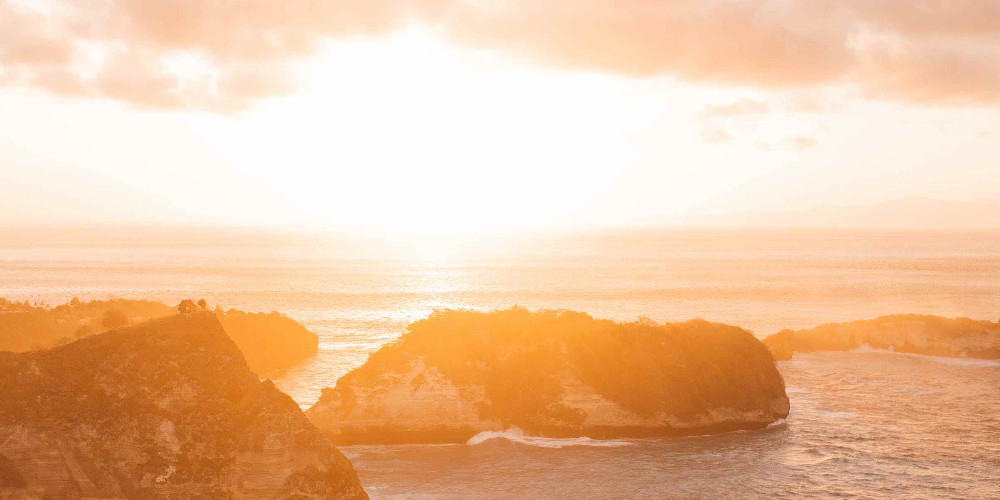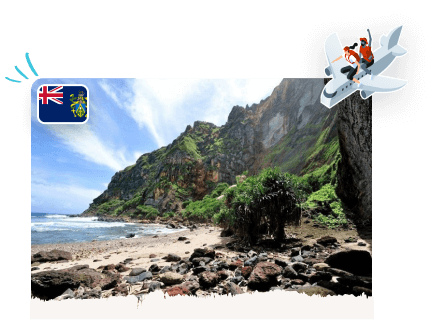
Pitcairn Island is a paradise for adventure lovers. Where is Pitcairn Island? How to get to Pitcairn Island? If you look at the Pitcairn island map, you will see that the island is located on the south of the Pacific Ocean, and it is far from many other islands. It is not one of the top places to visit in the world. Therefore it is common to ask where is Pitcairn Island and how to visit Pitcairn Island. When it comes to how to get to Pitcairn Island, it is not easy. It is a real adventure. The Pitcairn Island population is less than 100; it is 67. The number of Pitcairn Island people is on the decline, and officials try to increase the Pitcairn Island population. In the post, you will read about the reasons why you should visit Pitcairn Island. Also, you find answers to your questions, such as where is Pitcairn Island, how to get to Pitcairn Island, how to visit Pitcairn Island, why to travel to Pitcairn Island, what is Pitcairn Island population, what do Pitcairn Island people do, what to know about the Pitcairn island map, why it should be one of the top places to visit in the world, etc.
How to visit Pitcairn Island?

Pitcairn is not accessible from the air: there is no airport on the island, and the distances are too long to be covered by helicopter. The only way to get there is, therefore, by boat. From Mangareva in the Gambier Islands, the cargo ship MV Silver Supporter goes to Pitcairn several times a month: allow almost 40 hours of navigation. The only airport serving Mangareva is Tahiti, with a return flight every Tuesday. Several cruise companies also offer Pacific crossings, with a stop in Pitcairn. Once off Pitcairn, you will need to board a smaller boat, which will take you to the island. Travel to Pitcairn Island is for people looking for adventure and an extraordinary experience. You should not be afraid of making long journeys and not expect luxury services. The destination is not suitable for fragile people or people with reduced mobility. The roads are often simple dirt tracks, and the most used form of transport is the quad. Pitcairn is a paradise for history buffs wishing to follow in the Bounty mutineers' footsteps and for wilderness lovers. Therefore, it is not one of the top places to visit in the world.
History of the Bounty Epic and Mutiny

Pitcairn is known above all for its history, particularly for the epic of the ship HMS Bounty. Adapted for the cinema and told by Jules Verne in one of his novels, the epic of the Bounty rebels has fascinated them for decades. The story begins in 1787 in England: embarked aboard the ship HMS Bounty, an English crew of 45 men must go to Tahiti to collect breadfruit plants. The crossing to Polynesia is long: the requirement of Captain Bligh causes many tensions on board. Despite everything, the ship arrived in Tahiti in 1788. The sailors appreciated the sweetness of life so much that they decided to stay for several months. In April 1789, Bounty finally left Polynesia for England. After 3 weeks of navigation, the second captain, Fletcher Christian, and 8 sailors decided to revolt. Captain Bligh and 18 loyal sailors have then left adrift aboard a rowboat. The mutineers, aboard the Bounty, return to Tahiti before setting off in search of a desert island where they could take refuge without being found. After having sailed several months off the Cook Islands, Tonga and Fiji, the crew finally reached Pitcairn in January 1790. It is therefore on Pitcairn Island that the 9 crew members and 18 Tahitians settled. The ship was burnt to eliminate all traces of their presence on this unlisted island. Upon their arrival, the mutineers built huts out of wood and leaves. Very quickly, the Tahitians were treated like slaves by the English. The first years of cohabitation are then punctuated by revolts and murders between the men of the island. In 1794, there were only 4 Englishmen, 10 women, and several children left. The years that followed were more peaceful until one of the men managed to distil alcohol from plants and roots. It was only in 1808 that an American boat landed by chance on Pitcairn. Only one mutineer remains, John Adams. Today, this story is still omnipresent in the Pitcairn Islands. Every January 23, the Bounty fire commemorative date, the inhabitants of Pitcairn celebrate the event.
Climate

As it seems from the Pitcairn island map, Pitcairn is located on the south part of the ocean and offers a subtropical climate, with rather hot and humid summers. It is never very cold or very hot: temperatures oscillate between 20 and 30 ° C in summer but can drop to 16 ° C in winter (from May to October). The climate is humid all year round, but there is usually heavy rain from November to March, making the roads and paths very muddy. In dry weather, the fire risk is very high, and the island can get very dusty. Freshwater depends on rain; it is essential to save it during the hot months.
Cuisine

The cuisine of Pitcairn is mainly composed of products from the sea. Taste the fried bluefish and snapper, tuna, white fish, grouper, or other fish caught in the surroundings. The Pitcairn Island people mostly cultivate their food: sweet potatoes, beans, tomatoes, pineapples, bananas, or breadfruit. The honey made in Pitcairn is also delicious and famous, thanks to the absence of pollution. Pilhi is also very popular: it is a kind of cream made from fruit or vegetable puree, mixed with sugar and milk, then cooked.
Nature and environment

Most of the time put forward for their atypical history; Pitcairn Island is also a natural treasure. Indeed, there are unique species in the world and an environment practically untouched by man. The uninhabited volcanic islands Henderson, Ducie, and Oeno are true little paradises for naturalists and experienced divers. The seabed that surrounds the archipelago is exceptional: there are coral reefs in full health and several species of fish and sharks. The island is also an exceptional landmark for observing the sky and the stars. In 2019, the archipelago was included in the dark sky reserves list by the International Dark-Sky Association. The Pitcairn government named it "Mata Ki Te Rangi," meaning The eyes that gaze at the sky. It is the first archipelago in the world to have been listed by the association. Indeed, due to their isolation at sea and the absence of light pollution in the surroundings, stargazing is remarkable.
People

Pitcairn Island was officially first discovered in 1767 by the English navigator Philip Carteret. However, he was never able to land there because of the strong waves breaking around the island. By this time, Pitcairn had already received visitors, however, since religious sculptures, tools, and drawings on the cliffs were found there later. Some people believe that the island had been frequented by Polynesians and whale hunters in search of a land to rest. In 1808, an American ship docked but aroused little interest in Captain Folger. In 1814, the island was finally rediscovered by an English ship: it was then populated by John Adams, the only surviving mutineer, 10 women, and 23 children. A "non-aggression" pact is signed between Adams and the English. The island thus regularly saw ships of the empire dock. The population begins to increase slowly, and the English take more place in the local management, particularly because of the age of Adams. Today, about fifty inhabitants live permanently on Pitcairn: all the natives descend directly from the Bounty and Polynesian women's mutineers. There are 9 different families on the island, all more or less related by blood. The inhabitants meet very often together and welcome the visitors with joy since the discovery of the island. With Pitcairn only having one primary school, the island's teenagers continue their studies in New Zealand or Australia, and few of them decide to return to Pitcairn afterwards. The future of this ageing community is, therefore, in danger.
Traditions

When you travel to Pitcairn Island, you will find such an interesting culture and traditions here. The Polynesian women who originally inhabited the island left a strong cultural heritage: the weaving of coconut leaves to make baskets, wood carving, or painting on orchid leaves are still practised today by the residents of Pitcairn. In Pitcairn, the majority of residents are members of the Seventh-day Adventist Church. Therefore, they must adopt a rather strict behaviour: signs of affection in public are frowned upon, and alcohol consumption is tolerated only when the island welcomes foreign visitors.
Currency
 The official currency of Pitcairn
The official currency of Pitcairnis the New Zealand Dollar (NZD). However, you can provide a change in US dollars to pay for your accommodation, meals, and potential souvenirs. Euros, Pacific Francs (XPF), and Australian Dollars (AUD) may also be acceptable. In the Adamstown treasury office, you will be able to withdraw money with your bank card or to change money into another currency. Please note, it is only open 3 days a week.


